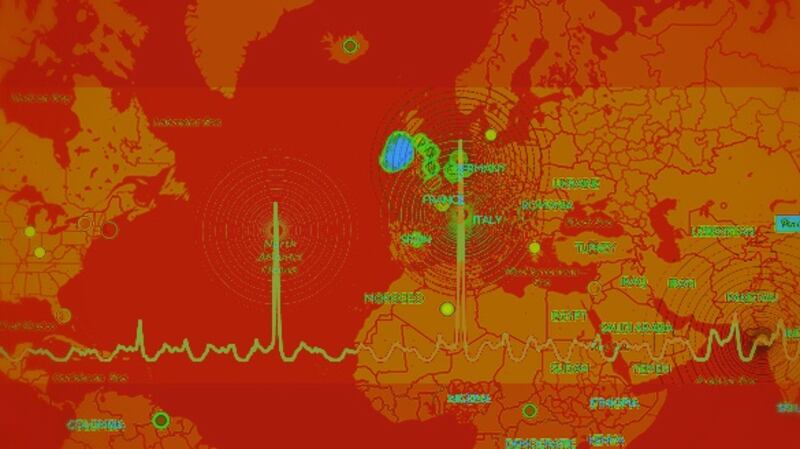It’s hard not to romanticise election campaigns of old. They seemed tactile beyond measure, with candidates knocking on endless doors and pressing untold quantities of flesh, while journalists filed considered daily dispatches, consumed at an appointed time.
Yet Irish elections were traditionally more observed than engaged with. The candidates came to us. The news was delivered to us. We were the audience, until we dropped our ballots in the box.
I got my first taste of an Irish election back in February 1987, as a student leader campaigning for Michael D Higgins in Galway West. That experience would serve me well during 20 years of reporting on election campaigns across the globe.

My political education in that distant Irish winter also gives me a deep, personal appreciation of what election campaigns have become. Voters are no longer just an audience. They now have the power to shape the conversation to suit their needs, rather than those of their political representatives.
The scale of that autonomous conversation boggles the mind. In the 48 hours after the dissolution of the Dáil, tweets about #GE16 were viewed 10.8 million times. During the first RTÉ debate of the campaign, 69,000 tweets were sent, turning #LeadersDebate into the number two trending topic on Twitter worldwide.
The numbers are useful when treated as a barometer of the heat and intensity of live connections between voters and issues. But let’s be very clear what they are not. They are not an opinion poll. They help us understand what resonates with voters at any moment in the campaign, but do not predict the result of the race.
More important than the numbers are the layers of public utility beneath. Social media platforms have broadened the scope of what it is possible to talk about during a campaign. It has reduced the power of an elite to frame the boundaries of acceptable political discourse. In a remarkable 50-tweet essay on the state of US politics in the internet age, digital theorist Clay Shirky observed: "The public is hungry for more than politicians are willing to discuss."
Intense engagement
As conventional election debate relegates conversations, social media amplifies them. Issues such as climate change and abortion barely registered a mention in RTÉ’s first leaders’ debate, but were the subject of intense engagement online. Twitter became a second screen where activists and commentators added fact and context to TV soundbites about hospital trolleys and rent supplement.
Among the most retweeted messages that night was a sobering pre-debate observation from the Peter McVerry Trust: “Between the 1st leaders debate and tonight’s 2nd debate 24 adults in Dublin will have presented as homeless for the 1st time.”
The voices of the smaller parties resonate clearly through a platform that is not limited by quotas or stopwatches. During that leaders' debate, the Social Democrats was the third most talked about party and the Green Party was fourth (despite its exclusion from the forum).
The instant engagement that shapes social media conversations does not happen in a vacuum. It is the result of an irresistible force meeting a movable object. Mobile devices make it easy to consume, comment and create. Plug in Twitter and there is virtually limitless capacity to share.
Data from the Reuters Institute for the Study of Journalism seems to bear this out. A third of Irish people it surveyed said they accessed news through a smartphone, while 29 per cent said they shared news online.
The shift in social consumption and creation is most pronounced among those born into the digital age. A generation native to the internet show a marked preference for content created by their peers. Luckily, those peers have access to an unprecedented array of content creation tools. New formats such as Gifs, Vine, polls and live video allow users to add a personal twist on news events, often with a distinctly subversive Irish sense of humour.
Political action
The marriage referendum and the #HomeToVote hashtag showed how social media can help shape the consciousness of a generation that is primed but not always prepared for political action. In this election, Twitter has supported efforts by the Union of Students in
Ireland
(USI) to mobilise young voters through the #MakeASmartVote campaign.
The tide of social engagement is unstoppable. But even digital evangelists like me know it is not yet distributed evenly. Political parties have enthusiastically embraced social platforms as another forum for political combat and 93 per cent of TDs are now signed up to Twitter. Yet direct interaction between politicians and voters has still not reached its full potential.
These are early days of a shift in our public discourse. The surface spectacle of social media is still a jarring presence to many. Its impact on political outcomes is still up for debate. But there is no mistaking the public utility that platforms such as Twitter have brought to the electoral process. Thirty years ago, each voter was an observer. Today, they have the power to be a participant long before they ever step into that polling station.
Mark Little is Twitter's vice-president of media in Europe and Africa









